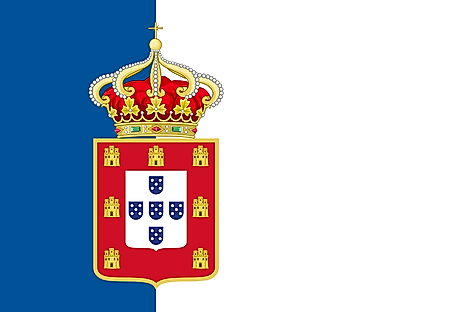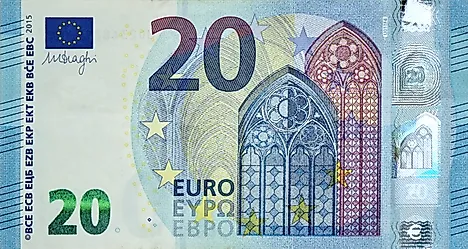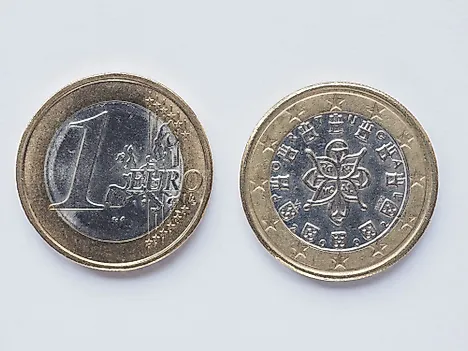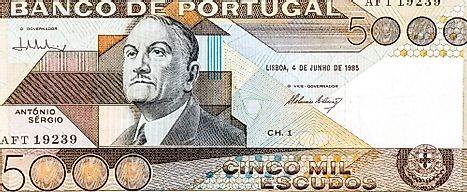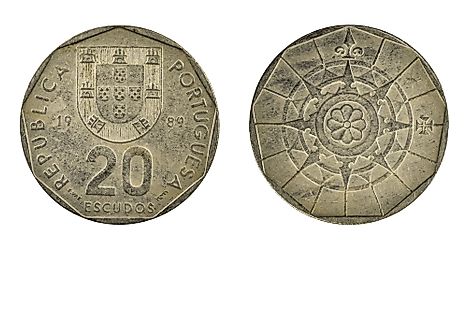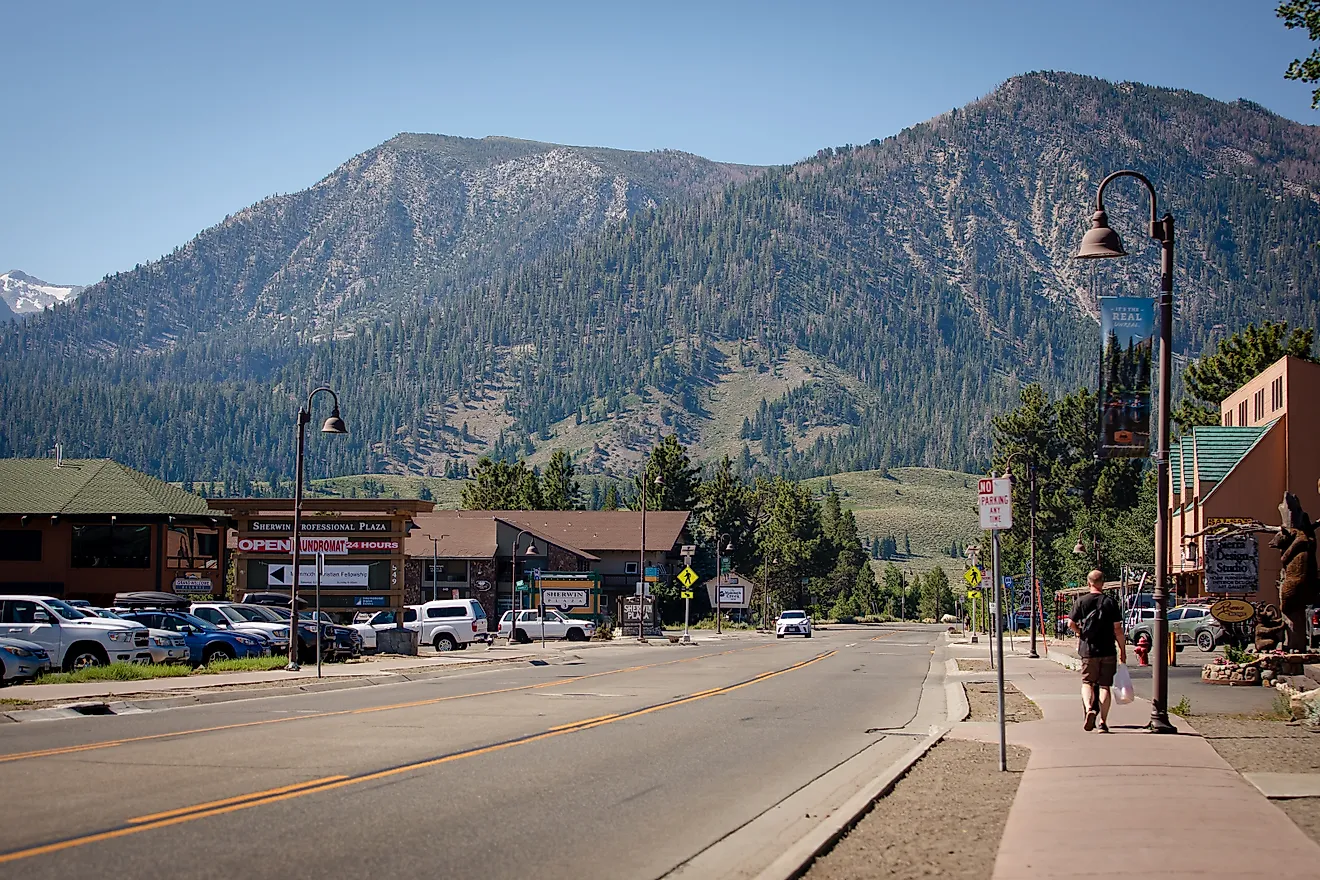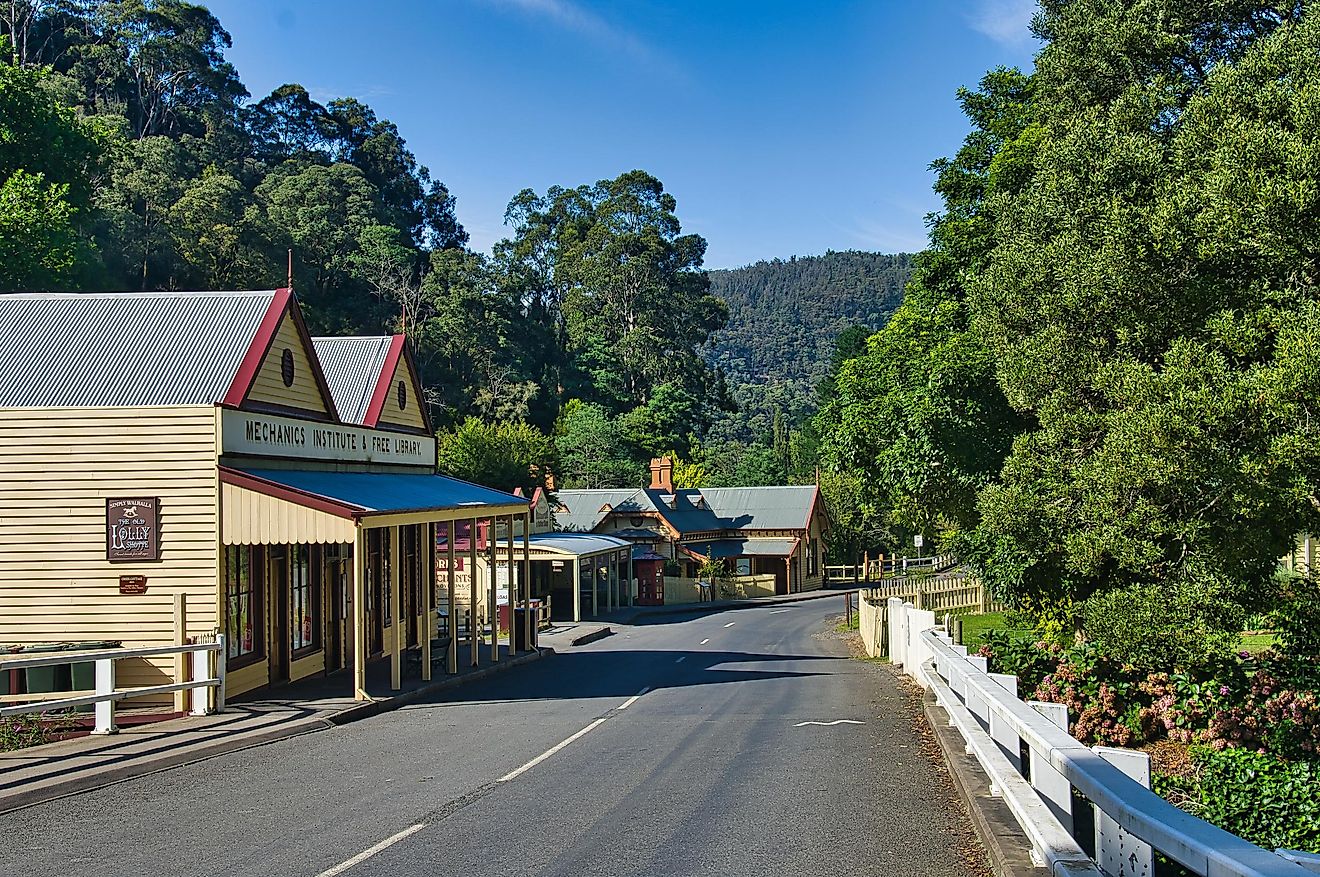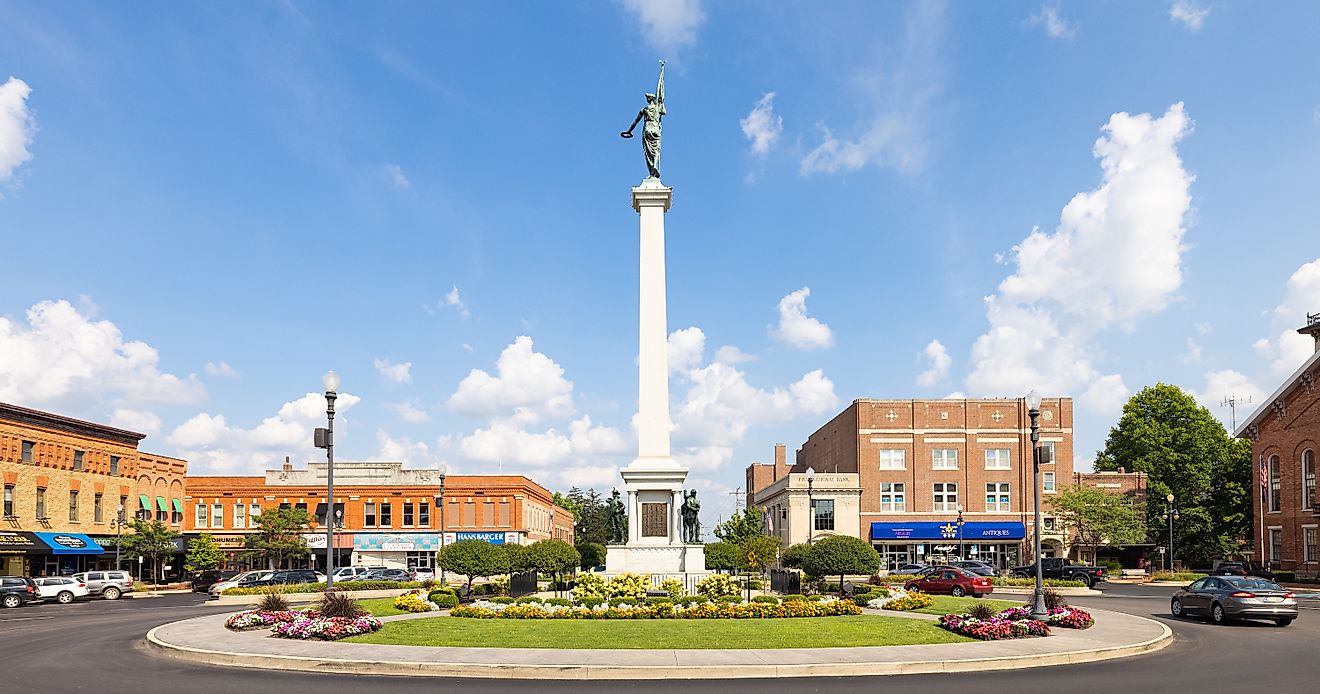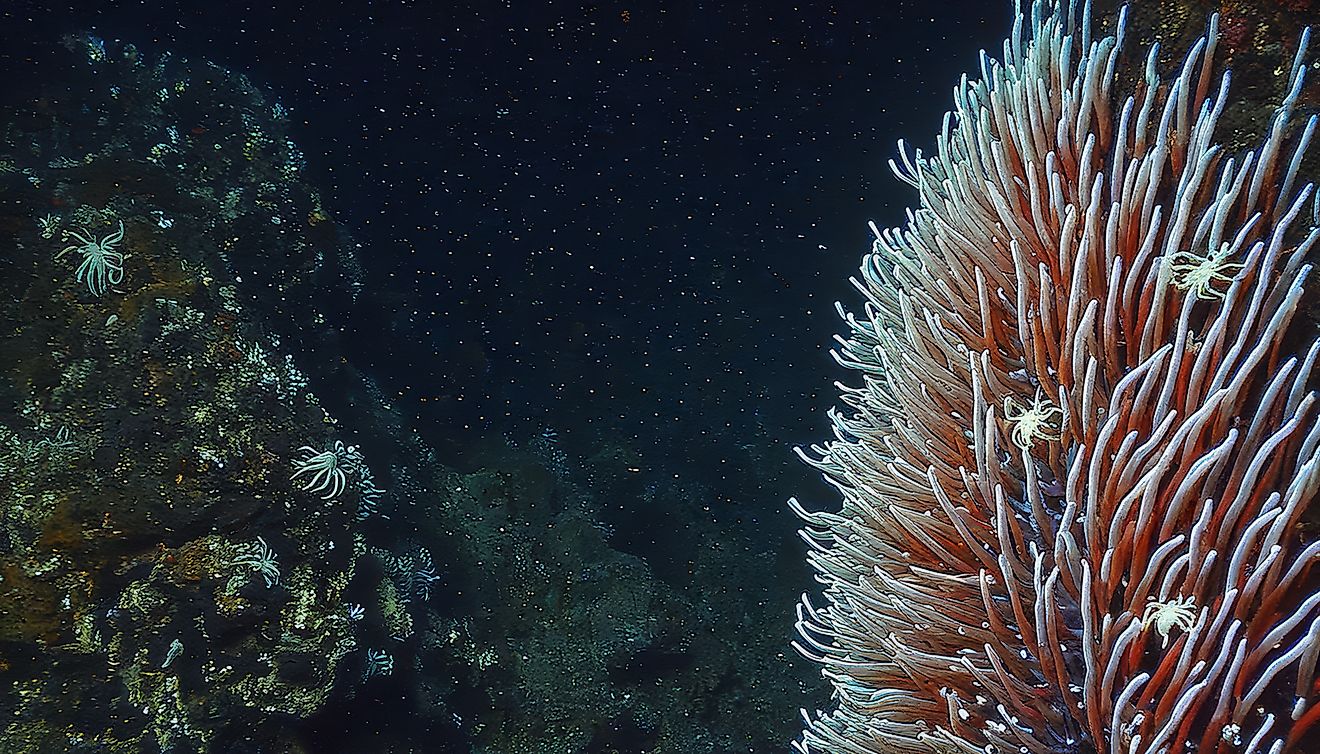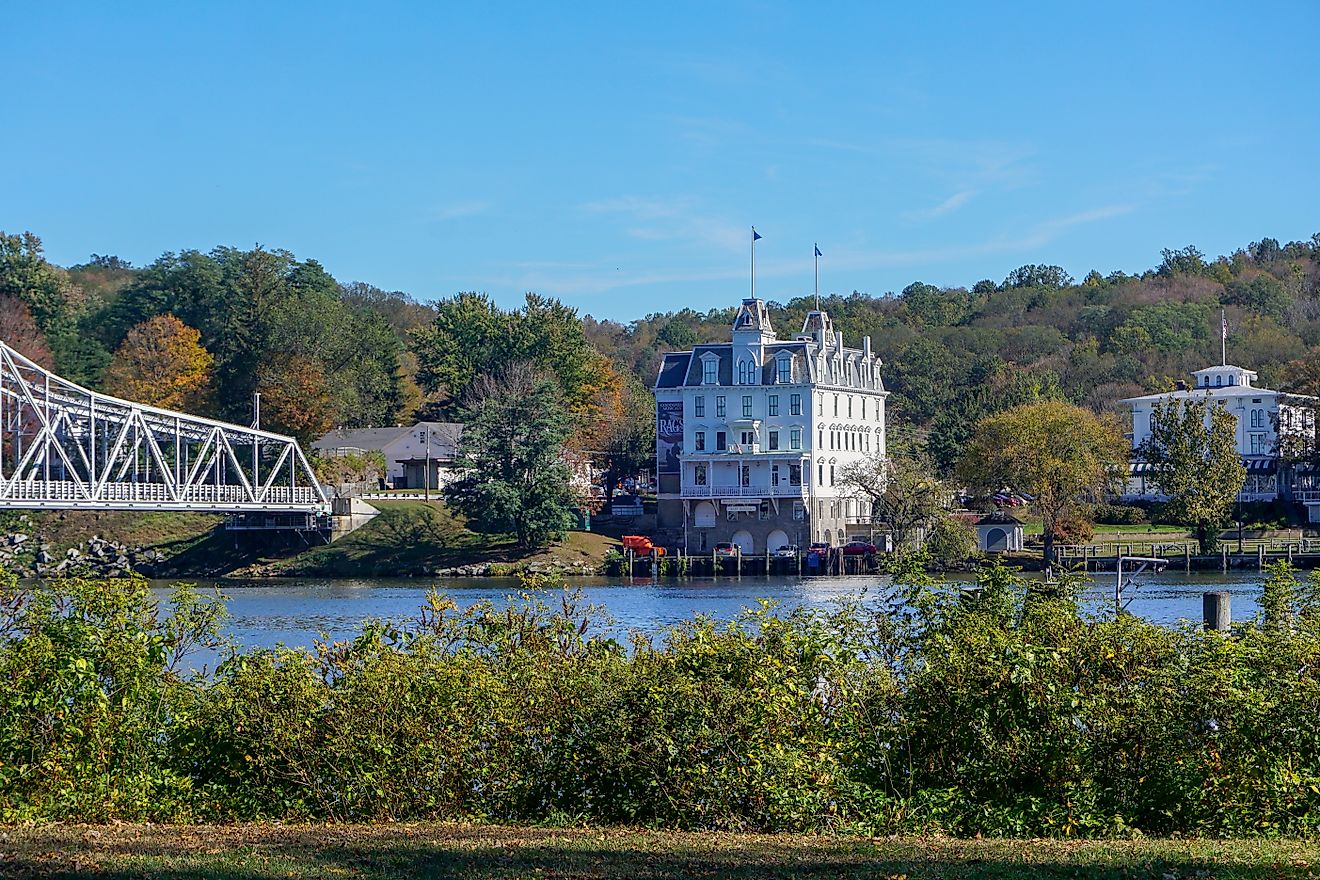Flags, Symbols & Currency of Portugal
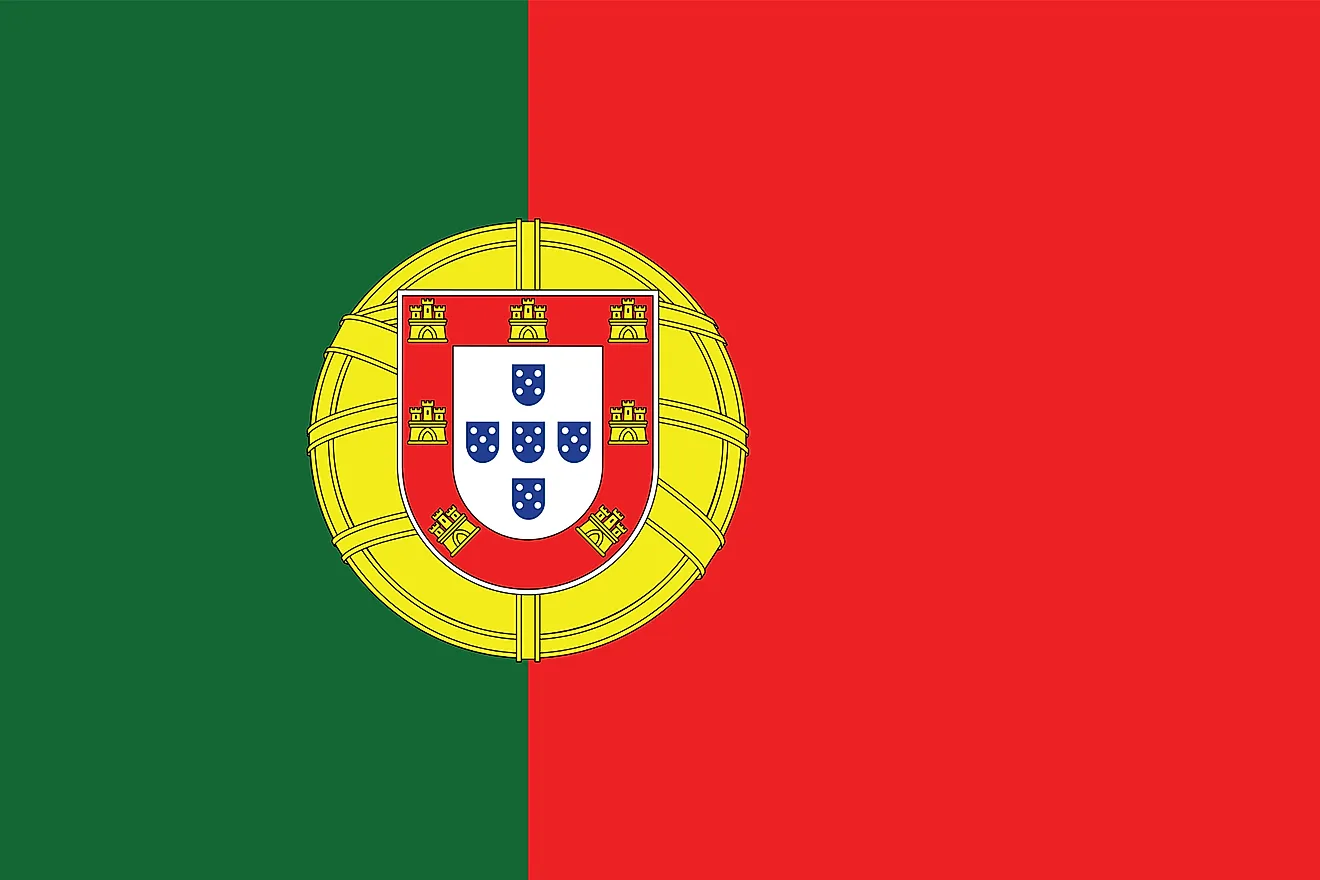
The National Flag of Portugal was officially adopted on June 30, 1911.
The National Flag of Portugal is a rectangular bicolor and features two vertical bands of green (covering about two-fifths on the hoist side) and red (covering three-fifths on the fly side), with the national coat of arms (armillary sphere and Portuguese shield), centered on the dividing line. The centered shield is representative of ocean exploration and the expansion of Portugal's influence during the reign of King Afonso Henriques. The explanations for the meanings of the colors are ambiguous, but a popular interpretation is: the green color is a representative of King Henry the Navigator, a famed Portuguese explorer, and also symbolizes hope for the future. Red recalls the internal revolution of the early 1800s and the blood of the martyrs who defended the nation. The flag has a width-to-length ratio of 2:3.
History of the Flag
The earliest flag that was recorded in Portugal was mainly used as a personal banner. It featured a blue cross on a white background. This banner was carried by the Count when he went to fight the battles against the Moors. The first Count’s son had adopted the same banner but slightly modified it by adding five sets of silver bezants to the cross to symbolize his power as he became the first King of Portugal. When King Alonso III became the Emperor in 1248, he retained the blue cross as the primary symbol of Portugal. King Alonso III merged the previous Coat of Arms with the Castilian Coat of Arms and created his emblem. This emblem featured a cross that was made of five blue shields and placed on a white field that was surrounded by a red border. The banner and the Coat of Arms was used until the rule of Maria II in 1830 when a new flag was adopted. In this flag, the coat of arms was placed on a split field of blue and white colors. This flag was used until the end of the monarchical rule. The current flag was adopted after Portugal became a republic.
Symbols of Portugal
The National Coat of Arms of Portugal

As the result of hundreds of years of modifications, Portugal's current coat of arms was officially adopted on June 30, 1911, and is based on the arms used by the kingdom since the Middle Ages. The shield resting in front is composed of seven golden castles, which represent the Moorish castles conquered during the Reconquista. Behind the shield is an armillary sphere, which was a navigational instrument, and symbolizes Portugal's importance during the Age of Discovery.
National Anthem
- Anthem Title: A Portuguesa ("The Portuguese")
- Music Composer: Alfredo Keil
- Lyricist: Henrique Lopes de Mendonça
- Date of Adoption: July 19, 1911
A Portuguesa ("The Portuguese") is the national anthem of Portugal. The music of the anthem have been composed by Alfredo Keil. The lyrics of the anthem have been authored by Henrique Lopes de Mendonça. The anthem was officially adopted on July 19, 1911.
A Portuguesa (Portuguese)
1.
Heróis do mar, nobre povo,
Naçao valente, imortal,
Levantai hoje de novo
Os esplendor de Portugal
Entre as brumas da memória.
Ó Pátria sente-se a voz
Dos teus egrégios avós
Que há-de guiar-te à vitória.
Chorus:
Às armas! Às armas!
Sobre a terra, sobre o mar!
Às armas! Às armas!
Pela Pátria lutar!
Contra os canhões marchar, marchar!
2.
Desfralda a invicta bandeira
À luz viva do teu céu
Brade a Europa à terra inteira
Portugal não pereceu!
Beija o solo teu jucundo
O oceano a rujir d’amor;
E o teu braço vencedor
Deu mundos novos ao mundo!
Chorus
3.
Saudai o sol que desponta
Sobre um ridente porvir;
Seja o eco d’uma afronta
O sinal de ressurgir.
Raios d’essa aurora forte
São como beijos de mãe
Que nos guardam, nos sustêm,
Contra as injúrias da sorte
"The Portuguese"
1.
Heroes of the sea, noble race,
Valiant and immortal nation,
Now is the hour to raise up on high once more
Portugal’s splendour.
From out of the mists of memory,
Oh Homeland, we hear the voices
Of your great forefathers
That shall lead you on to victory!
Chorus:
To arms, to arms
On land and sea!
To arms, to arms
To fight for our Homeland!
To march against the enemy guns!
2.
Unfurl the unconquerable flag
In the bright light of your sky!
Cry out all Europe and the whole world
That Portugal has not perished.
Your happy land is kissed
By the Ocean that murmurs with love.
And your conquering arm
Has given new worlds to the world!
Chorus
3.
Salute the Sun that rises
On a smiling future:
Let the echo of an insult be
The signal for our revival.
The rays of that powerful dawn
Are like a mother’s kisses
That protect us and support us
Against the insults of fate.
The Currency of Portugal is the euro
The current official currency of Portugal is the euro.
Coins
Euro coins were introduced in 2002. The euro coins in circulation are in denominations of €0.01, €0.02, €0.05, €0.10, €0.20, €0.50, €1.00, and €2.00. All euro coins have a common reverse that portrays the map of Europe while each country has the right to design the image to be portrayed on the observe side. The Portuguese euro coins depict different observe designs for the three series of coins. They portray seven castles and five escutcheons, the same image portrayed in the Portuguese court of arms. In 2006, 1,000,000 €2.00 coins were released for circulation but no €2.00 coins have been released since then.
Banknotes
The first euro banknotes were released for circulation in 2002, and are produced by the European Central Bank. They took over from the local currency and became the official banknote of the Eurozone. The design of the euro banknote is identical across the Eurozone although they are printed in the respective countries. They are made of pure cotton fiber to make them have a durable and distinctive feeling. The euro notes in circulation are €5, €10, €20, €50, €100, €200, €500. All euro notes bear the flag of the European Union, the map of Europe, the name "euro" in both Latin and Greek, and the signature of the president of the European Central Bank.
Historical currencies of Portugal
Portugal made a formal application to join the EU in March 1977 before its application was approved by member states and officially joined the union in January 1986 alongside Spain. It officially began using the euro in January 1999. Before adopting the euro, Portugal used the Portuguese escudo as its official currency. The escudo was divided into 100 centavos (cents). The Portuguese escudo was phased out on March 28th, 2002 after the euro was adopted on January 1, 1999. During the adoption of the euro, the exchange rate for the escudo was 200.48 to €1. Although the currency is no longer used as a medium of exchange in Portugal, the escudo banknote is still eligible for exchange with the euro until February 28, 2022. The exchange of escudo coins ceased on December 31, 2002.
